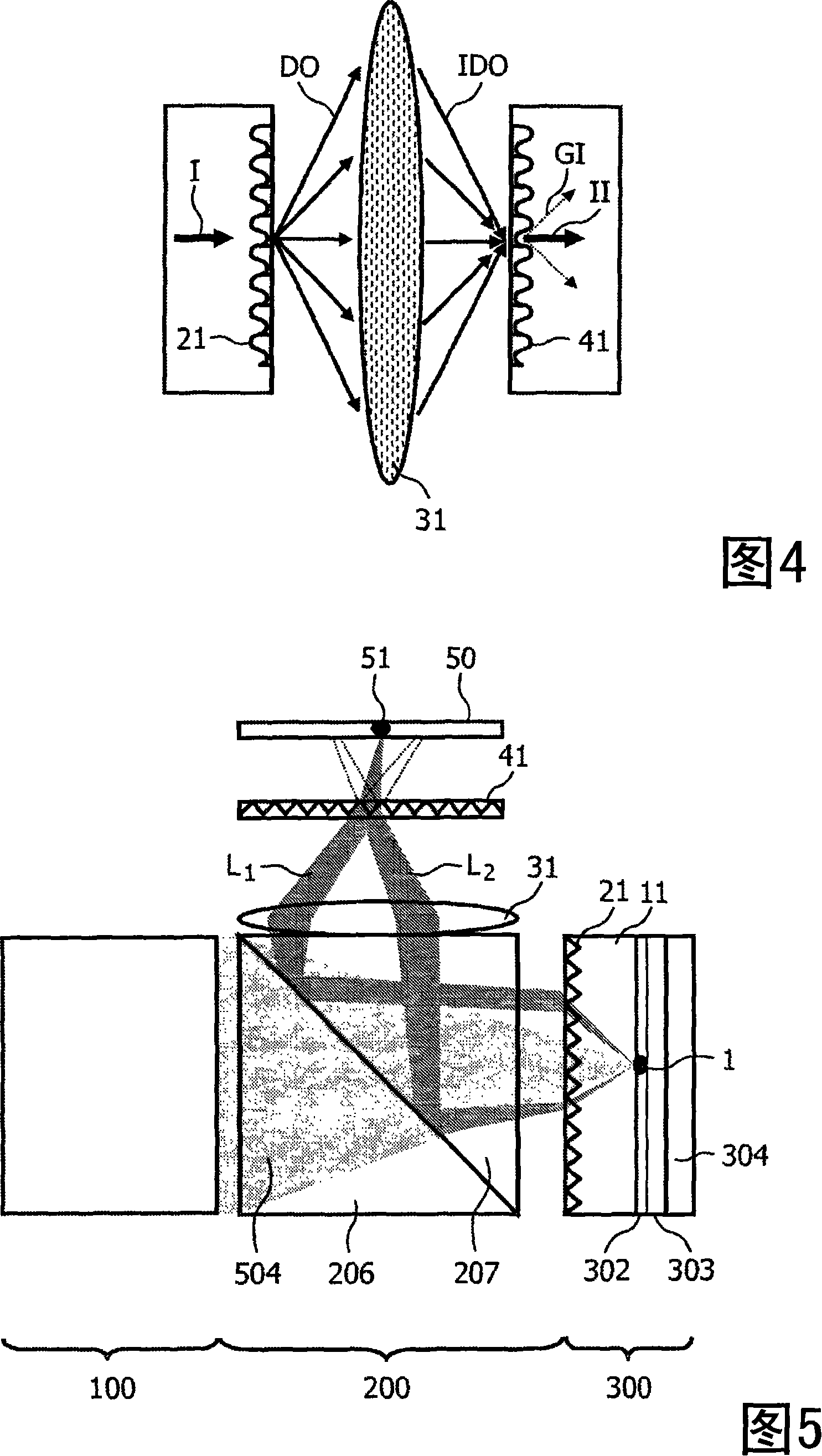Optical system with diffraction optical element used for mapping signal light onto a detector
A technology of diffractive optical elements and optical systems, applied in the directions of optical elements, optics, fluorescence/phosphorescence, etc.
- Summary
- Abstract
- Description
- Claims
- Application Information
AI Technical Summary
Problems solved by technology
Method used
Image
Examples
Embodiment Construction
[0033] Fig. 1 schematically shows the setup of an optical system according to a preferred embodiment of the present invention. The light source 1 is arranged adjacent to a transparent substrate 11, which may be, for example, a flat glass plate. The light source 1 may be a point of the sample material to be investigated that emits signal light (eg fluorescence). However, it should be noted that such a research system is only one example of the application of the present invention.
[0034] A detailed analysis of the propagation of the signal light emitted by the luminescent particle 1 through the glass substrate 11 can be found in WO02 / 059583A1, which is hereby incorporated into this application by reference. According to this analysis, a considerable portion of the signal light emitted by light source 1 will be contained within the SC mode, which passes through the representative ray L 1 , L 2, and it includes the signal light reaching the backside 10 of the glass substrate...
PUM
| Property | Measurement | Unit |
|---|---|---|
| wavelength | aaaaa | aaaaa |
| transmittivity | aaaaa | aaaaa |
Abstract
Description
Claims
Application Information
 Login to View More
Login to View More - R&D
- Intellectual Property
- Life Sciences
- Materials
- Tech Scout
- Unparalleled Data Quality
- Higher Quality Content
- 60% Fewer Hallucinations
Browse by: Latest US Patents, China's latest patents, Technical Efficacy Thesaurus, Application Domain, Technology Topic, Popular Technical Reports.
© 2025 PatSnap. All rights reserved.Legal|Privacy policy|Modern Slavery Act Transparency Statement|Sitemap|About US| Contact US: help@patsnap.com


